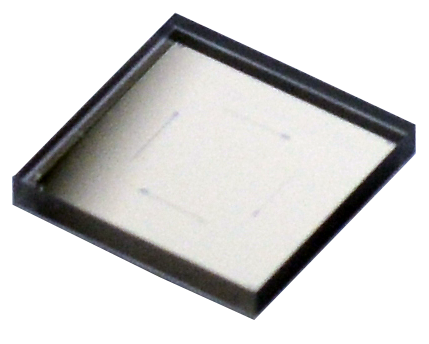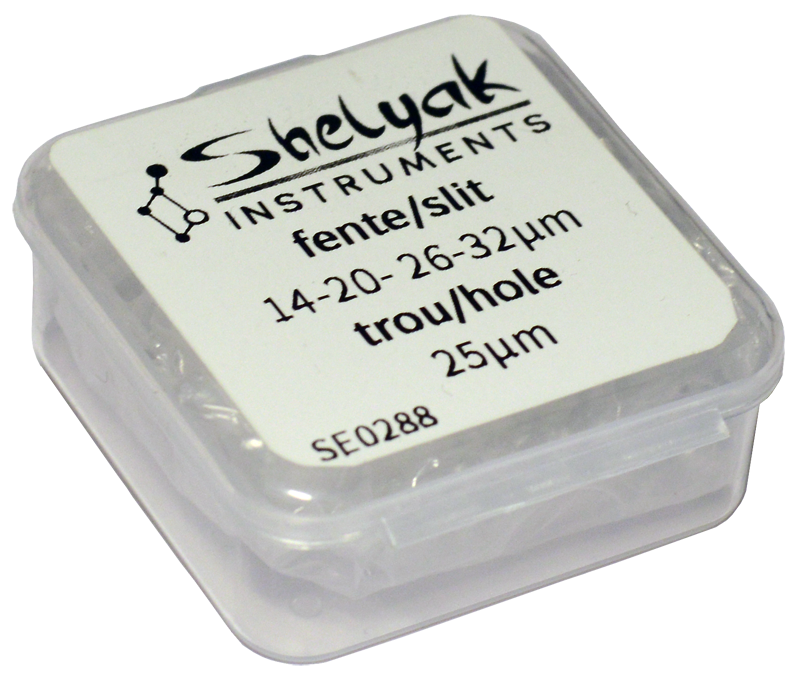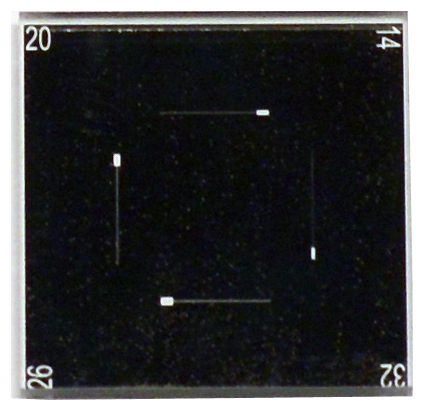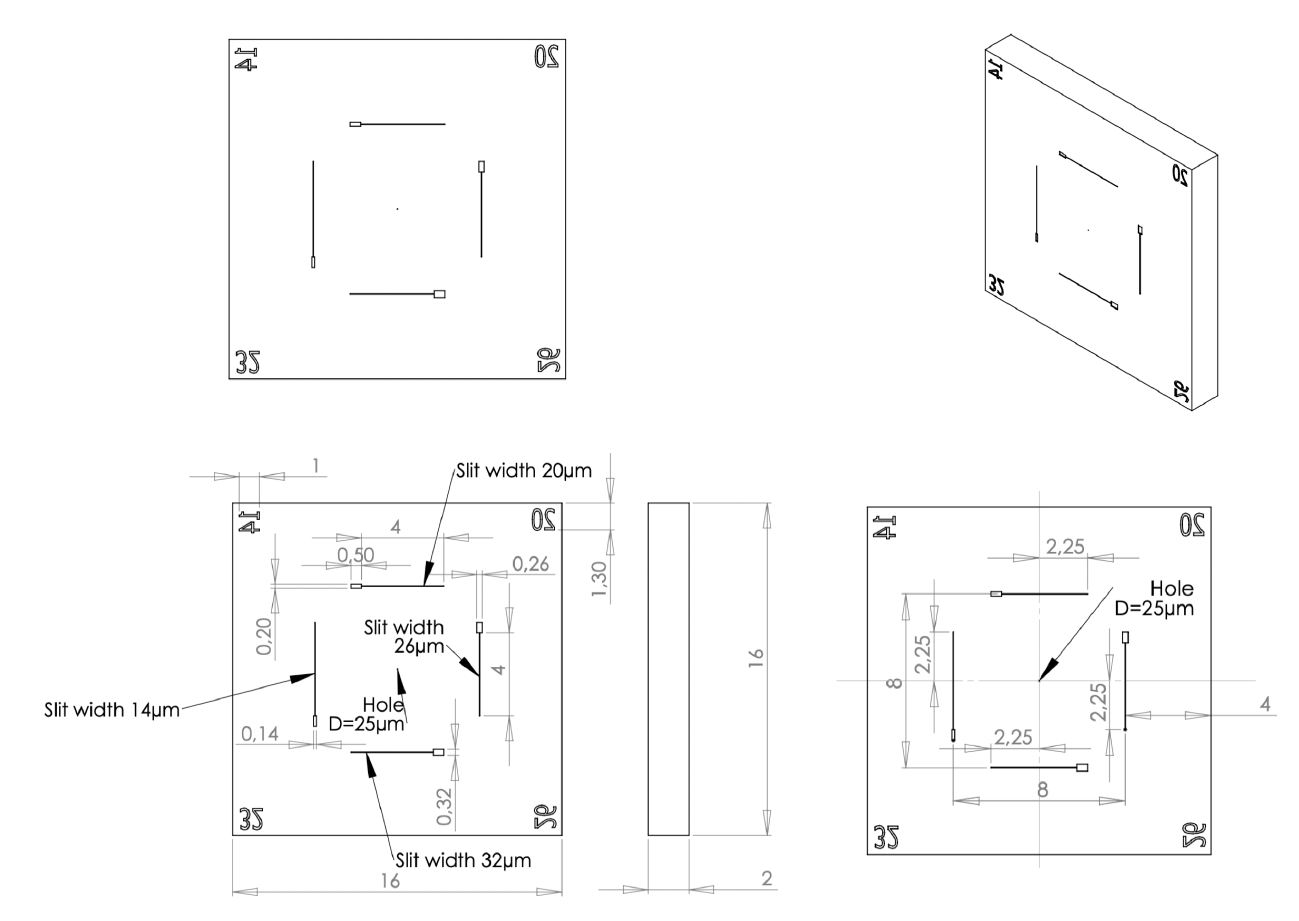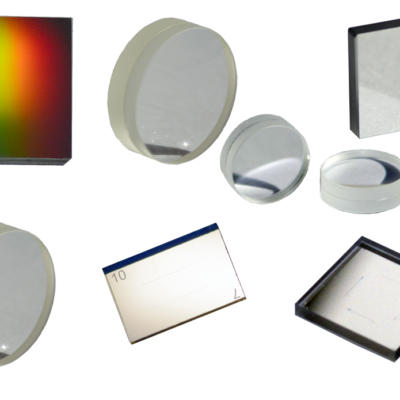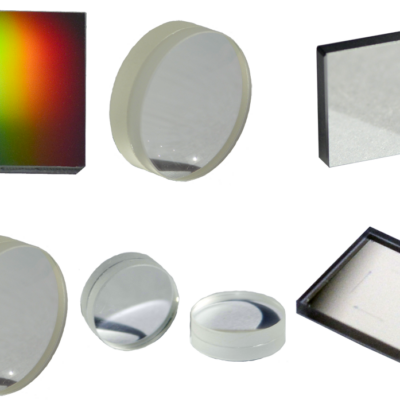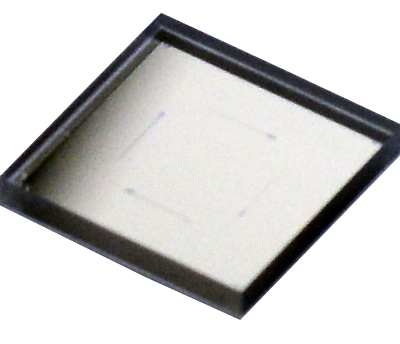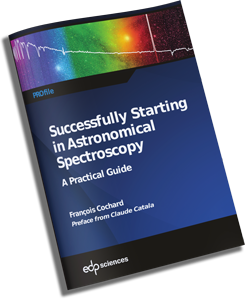Star’Ex 14-20-26-32 µm slit + 25 µm hole (GEN2)
87,60 € incl. VAT - 73,00 € excl. VAT
Second-generation 4-position reflective slit (GEN2, November 2024) for Star’Ex spectrographs (or any instrument of your own design) .
Compliant spectroscope
All about the product:
Description
This “second-generation” miror slit (GEN2, released in November 2024) takes the form of a fused silica (synthetic quartz) blade, 16 millimetres square and 2 millimetres thick. One side of the blade is coated with an anti-reflective layer (to limit ghost images effect), while the other is covered with a light-opaque chromium layer, with the exception of narrow openings corresponding to the four slits, engraved using a high-precision photolithographic technique.
Four independent slits are arranged in a square, with widths of 14, 20, 26 and 32 µm. A central hole 25 µm in diameter. Slit widths are specified in the corners of the substrate. For example, the 14-micron slit is ideal for spectrography. very high spectral resolution with a small telescope. By contrast, the 32-micron slit is better suited to low-resolution spectrography with a respectably sized telescope, typically 300 mm in diameter.
The end of each slit is widened by a factor of 10 over a length of 0.5 mm. This extension has two functions: (1) to provide more information on instrument operating conditions (level of atmospheric turbulence, instrumental performance, quality of settings, evaluation of instrumental response); (2) to enable the acquisition of spectrophotometric data to facilitate calibration of spectra in absolute flux values.
Each slit is 4mm long, enabling us to capture the spectrum of objects with large angular surfaces, such as nebulae or comets.
The presence of a 25 µm central hole, although discreet, is a major innovation. This hole allows the spectrograph to be set up safely and easily on a table, without the need for a telescope or starry sky. The hole acts as an artificial star.
The slit is made of fused silica. In addition to its mechanical robustness, this material offers extremely wide spectral transparency, not only in the infrared, but also in the ultraviolet, right down to very short wavelengths. With the right spectrographs, you can explore regions of the spectrum that are rarely observed by amateurs, but are very rich from an astrophysical point of view. Although Star’Ex is not specifically designed for ultraviolet observation, the use of silica offers a gain, albeit modest, around 375 nanometers (the reasonably attainable end of the blue spectrum with this instrument).
The slit is 2 mm thick. The aim of this choice is to offer a robust component, unlikely to break if mishandled (although caution is advised, as it’s still glass!). Both sides of the slit are perfectly accessible and robust enough to be easily cleaned, for example with cotton dampened with water, followed by dusting with dry air.
This slit can be used on stellar spectrographs other than Star’Ex, or on a variety of laboratory equipment. By definition, this slot is of course compatible with all Star’Ex spectrographs, whatever their configuration. All you need to do is make a new support part using 3D printing, or buy one yourself. You are also free to define your own mechanical support.

